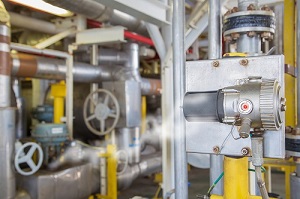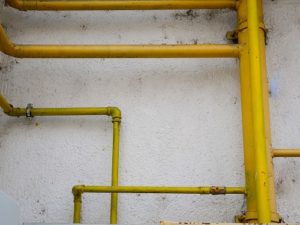If dangerously high levels of natural gas or carbon monoxide are present in your workplace, you need a reliable monitor to alert you. Gas detection is vital to industrial and certain commercial settings where it’s possible to be exposed to LPG gas, natural gas, and refrigerant gases. Leaks in natural gas or LPG lines poses fire and explosion hazards for workers and facilities. Leak detection obviously saves lives, but it also helps prevent property damage. Continue reading for tips on simplifying gas detection in the industrial setting.

How Leak Detectors Work
Don’t confuse leak detectors with ordinary indoor ceiling-mounted gas detectors. They do different things! Mounted gas detectors alert people indoors to the presence of natural gas or carbon monoxide and are standard features in many buildings. Leak detectors specialized for the industrial/commercial sector, however, are used to not only check for leaks, but to find the source of the leak. Leak detectors use sensors. The detector’s sensor finds evidence of gas and triggers an alarm. In addition to the sensor, gas detection monitors can pinpoint leaks using flexible probes.
Provide Portable Monitors
One way to make leak detection easier is by using portable gas monitoring systems. Portable systems can be designed with both single and multiple sensors. This means you can measure one gas or multiple substances. These monitors are outfitted with audible alarms. Some even have visual alarms which are especially attractive in noisy industrial settings where high noise levels are common. Staff enjoy using the portable monitors because they’re not cumbersome to operate. Some models are similar in size to cell phones. They operate with either standard or rechargeable batteries.
Make Monitors User-Friendly
If you want an easier way to detect gas leaks, make sure your monitoring system has an interface everyone can use. A user-friendly interface is intuitive for staff to use. Look for gas leak detection equipment with controls that are easy to understand. You also want a display large enough for people to read. The system should include security features so that tampering isn’t an issue. Once you’ve chosen your monitoring system, ensure proper and routine training takes place.
Testing the System

Gas leak detectors are safety devices and as such they protect lives and property. To do their job, they must function properly. When you consider the serious consequences of a monitor that malfunctions even for a few minutes, it’s critical to make sure your system works. To start, ensure you buy from a reputable company known for selling the best gas detection monitors. Make sure you have the system installed by a qualified technician. The manufacturer should calibrate your equipment. They should also send it with the initial settings to guarantee the device works properly at installation. Once installation is complete, you’ll need to bump test the monitors each day. Check with your installation technician for explanations about how to perform bump tests. The technician should also instruct you on other maintenance tasks.
The Law Requires Gas Leak Monitoring
Do you operate a chemical plant, refinery, shopping mall, or indoor swimming pool? If so, you understand air contamination. Depending on your facility, you may encounter combustible and/or toxic gases. Anywhere you have a confined workspace where staff is a risk of exposure, you’ll be required to have leak detection and monitoring systems in place. Promising your employees a safe and healthy work environment is not only your ethical responsibility, it’s the law. Installing the correct leak detector and maintaining it correctly could mean the difference between life and death.
Whether you’re working on your initial installation or are updating your system, contact DOD Technologies, Inc. We’re committed to making sure our customers choose the correct leak detection equipment.







